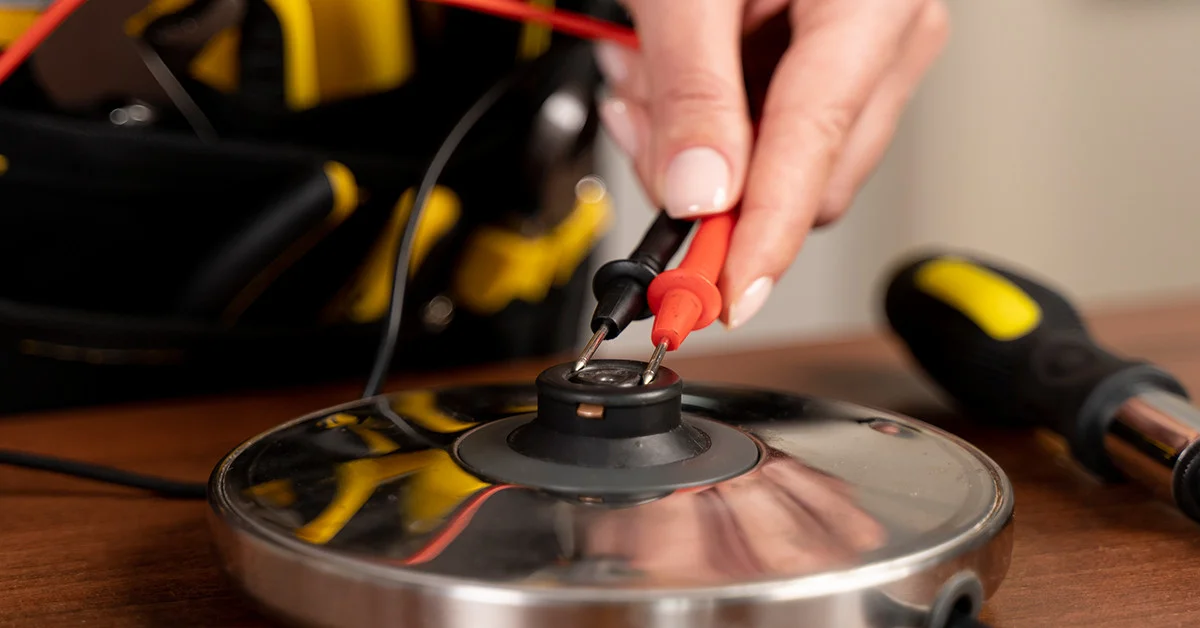
Jump to

Understanding how to identify positive and negative speaker wires in car audio setups is essential. Mixing them could damage your speakers and make your music sound not so great.
Do you need assistance determining which wires for car speakers are positive or negative? Most speaker’s positive wire is white or marked white, while the negative wire is typically black or unmarked. However, remember that this may vary depending on the maker’s design – they may use different markings or colors. This article contains in-depth information on car speaker wires that will answer your questions.
Key Takeaways
- Color coding, labeling, and multimeter tools effectively identify positive and negative speaker wires.
- The quick method to identify positive and negative speaker wires is using a multimeter.
- A clear sound indicates that the wiring is correct.
- Once you know which wires are positive and negative, connect them to the amplifier.
- No danger exists if you connect positive and negative speaker wires.
Methods to Identify Positive and Negative Speaker Wires In Car
Several ways exist to identify positive and negative wires in a car sound system. So, let’s look at some practical methods for separating the wires from your speaker:
1: Using A Multimeter
Using a multimeter is the fastest and simplest method. Multimeter is a device designed to measure electrical current, voltage, and resistance.
This method is efficient as it ensures correct identification of wires, regardless of color or labeling.
To use this technique, disconnect the wires you want to test. Connect the positive end of the multimeter to one wire and the other end to the opposite wire.
If the meter displays a positive number, it shows a connection between the positive probe and the positive wire. Furthermore, connect the negative probe to the negative wire. If it shows a negative number, your wires are twisted.
2: Using Labels
This method involves looking for labels on the wires. Some car audio systems have markings that show whether a wire is positive or negative. While this is useful, it is not universal and may only sometimes be present, making it less reliable.
3: Using Color Coding
Understanding the speaker wire color code can help you identify the positive and negative wires for proper installation. So, you can distinguish the wires by their colors. If you bought an entire speaker system, the cables are already color-coded. Generally, red represents positive, and black represents negative.
However, you can only sometimes apply correctness, and you should note that these conditions may reverse. If you bought a speaker system with a manual, the wire colors should be easy to understand.
4: Sound Examination
If you’re not good at determining sound quality, don’t worry: you can train your ear. Usually, a few seconds of listening will tell you if the speaker is doing its job correctly.
If you do not correctly install the speaker wire, you may hear interruptions or interference in the sound. Even when you turn up the volume, the speaker may sound quieter or dimmer.
Connecting Speaker Wires to Your Amplifier: A Step-by-Step Guide
After correctly identifying the positive and negative car speaker wires, connect them to the amplifier. To get good sound and protect the speakers, it’s important to connect the cables correctly to the amplifier terminals. The amplifier typically marks its terminals. However, if they are not, refer to the manual for your particular amplifier.
Car audio systems use a variety of connectors. RCA connectors are the most common, connecting the amplifier to the source unit (such as a head unit or a phone). RCA connectors usually have red and white or black plugs, the red plug means positive, while the white or black plug means negative.
A speaker wire connector is another standard connector that joins the speaker wire to the amplifier. Here’s a step-by-step guide to connecting speaker wires to the amplifier.
- Locate the amplifier’s positive and negative terminals. Typically, you label these, but if not, consult the instructions for your particular amplifier.
- Connect the positive speaker wire to the amplifier’s positive terminal. Ensure that you securely attach the wire.
- Connect the negative speaker wire to the amplifier’s negative terminal. Ensure that you securely attach the wire.
- Repeat these steps for each speaker.
Troubleshooting
Even with proper speaker wire identification and connection, problems with your car audio system may arise.
Common issues include poor sound quality, distortion, or no sound. Here are some helpful tips for identifying and fixing these issues:
Examine the Connections:
Make sure you secure all connections and connect the wires to the correct spots.
Examine the Source Unit:
Please check if you have turned on your source unit, such as the head unit or smartphone, and make sure that you have set the volume correctly.
Check the Amplifier:
Make sure you switch on the amplifier and adjust the volume to a suitable level.
If your problems persist, you should consider seeking professional assistance. A car audio expert can figure out and fix any problem with your system.
What Happens If You Connect Positive and Negative Speaker Wires?
Many people confuse negative and positive speaker wires. Fortunately, there is no danger as a result of this mix-up. The speaker sends out sound waves with negative and positive pressure changes. Our ears detect these differences and transmit them to the brain as electrical signals.
When you attach the positive wire to the speaker’s negative, the sound wave changes direction, causing an opposite polarity. This disrupts the sound waves, causing some of them to cancel out and the audio to weaken. As a result, you may overlook specific sound frequencies in the mix.
This results in a chaotic image that prevents proper sound effect mixing. The speakers are close to each other, making it more noticeable.
So, the sound appears dim or lower in volume, with wired interruptions between the music or audio. Lower frequencies have more distortion or poor sound quality because the longer air medium affects the wavelengths less.
In short, occasionally mixing up the wires will not harm the speakers, but the sound won’t be good. Connect the cables to their proper locations for the best audio experience.
How Can You Check If You have Connected Your Speaker Wires Properly?
Figuring out if your speaker wires are correct is easy. Turn on the speaker, listen to music, if it’s clear, with no strange noises or interruptions, you did an excellent job with the wiring.
However, if the sound quality could improve, it would sound weak or keep cutting out, and you must correctly connect the speaker wires. You may occasionally hear small audio breaks, showing a cable connection problem.
Why is it Important to Know Which Speaker Wire is Positive or Negative?
Understanding whether a speaker wire is positive or negative is important for several reasons:
Avoiding Interference
To avoid interference, it is critical to understand which speaker wire is positive and which is negative. The positive wire sends sound from your stereo to the speaker, and the negative wire returns it. If you mix them, your speaker won’t be able to send the sound back correctly, resulting in distorted audio.
Protecting Your Stereo
Connecting the correct wires to the correct terminals is crucial to avoid damaging your stereo. Putting the positive wire in the negative terminal could cause damage to your audio system.
Enhance Your Sound
Knowing whether a speaker wire is positive or negative is essential for good sound. The positive wire is thinner as it carries less power than the negative wire. This knowledge helps you get the best sound quality from your speakers.
Understanding the Significance of Speaker Polarity
The arrangement of your speakers’ wiring affects speaker polarity and holds importance for your car’s audio setup. The amplifier controls the sound system, including cables for the radio and power and ground. This connected system includes the wiring from your speakers.
Vehicle sound systems can be complex, with additional parts and cables. However, it is crucial to have a basic setup for your audio system to function correctly.
Usually, two wires, one positive and one negative, extend directly from your speakers. When speakers operate, the wiring configuration is generally less important because they function seamlessly regardless of the specific wiring configuration.
However, when using two speakers in a standard sound system, you may experience sound distortions or cancellations. Also, connecting your speakers to an amplifier for better sound quality can cause distortions or interruptions.
Tips for Keeping Polarity Consistent
To keep things organized, mark the positive wire with colored tape or tubing. This simple visual cue reduces confusion, especially in setups with multiple speakers. Always connect the marked side to the positive terminals on both the amplifier and the speakers when connecting.
To keep wires organized and labeled for future use, put numbers on your wires or write on them with a marker. This is extremely useful, especially when you need to unplug and plug things back in. Another option is to use wire covers or sleeves to keep all the wires neat and together. It simplifies determining which wire goes where.
Conclusion
Finally, it is essential to identify positive and negative speaker wires in car for best car audio performance. You have different options, like color coding, labeling, and using tools such as multimeters. Choose the method that works best for you and your system. Once you’ve correctly identified the wires, refer to our guide on installing correctly identified wires to ensure proper connection.
To troubleshoot any issues, check connections, turn on the source unit, and check the amplifier settings. This ensures your car’s sound is good and everything works well.
Frequently asked Questions (FAQs)
You can use color codes or your multimeter to determine whether a speaker wire is positive or negative. When you connect the leads correctly, the multimeter shows a positive reading. In other words, connect the negative black probe to a negative speaker wire and vice versa.
While flipping the positive and negative wires usually won’t damage modern speakers, it can affect the sound. Therefore, to get the best performance, it’s important to fix it.
For determining the left or right speaker, conduct a sound test. You listen for the appropriate audio outputs by playing test audio through the speakers.
The colors of speaker wires usually indicate their positive and negative sides. Usually, red denotes the positive wire, and black represents the negative, but the colors may vary. Therefore, check your owner’s manual for home theater systems or car stereos.
The positive wire in speaker cables is typically copper, while the negative wire is silver. Check speaker’s markings, which usually indicate one side as negative and the other as positive. Conversely, before connecting the cables, use an amp meter to trace them and determine their polarity.
Use a multimeter to measure the voltage across the speaker terminal. A negative reading on the multimeter indicates that the speakers are wired reversed.
Cooper Katzeel
Car Enthusiast
Cooper Katzel, a dedicated car enthusiast, delves into the world of automobiles and audio systems. With a deep interest in cars and a focus on superior sound, Cooper’s expertise traverses the spectrum. His journey is a delightful exploration of automotive wonders and the world of car speakers. Cooper’s passion and technical know-how make him a trusted advisor for car enthusiasts.
Follow On Instagram
Recent Posts
- All Post
- Blog
- Car Speaker
- Car Subwoofer
- Pro Tips & Guides
- Back
- Speaker Wire



Dream Life in Paris
Questions explained agreeable preferred strangers too him her son. Set put shyness offices his females him distant.


